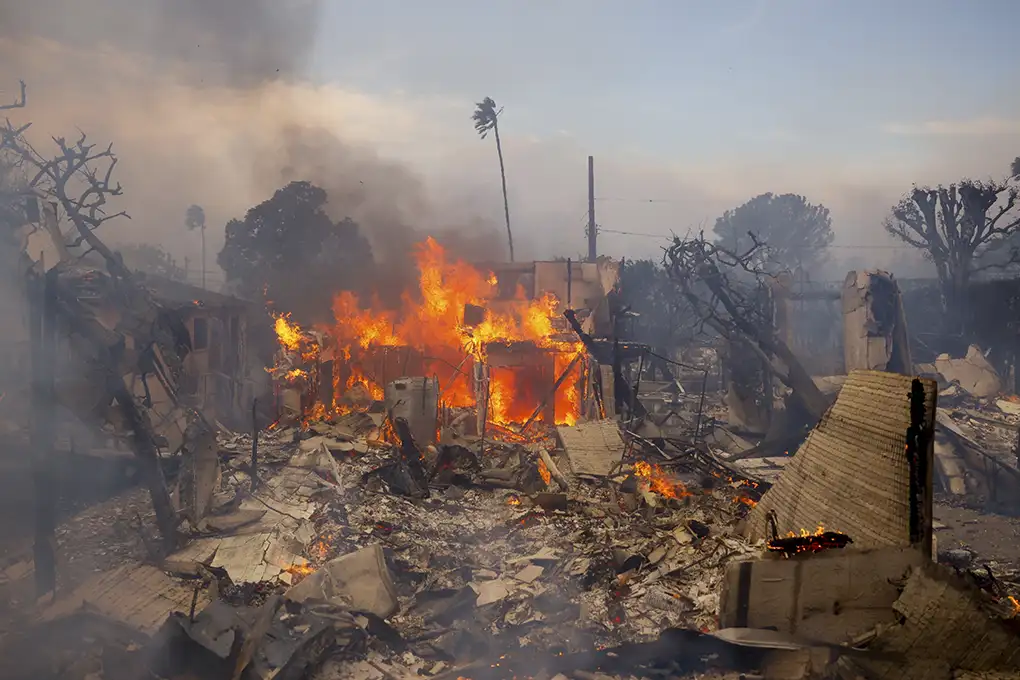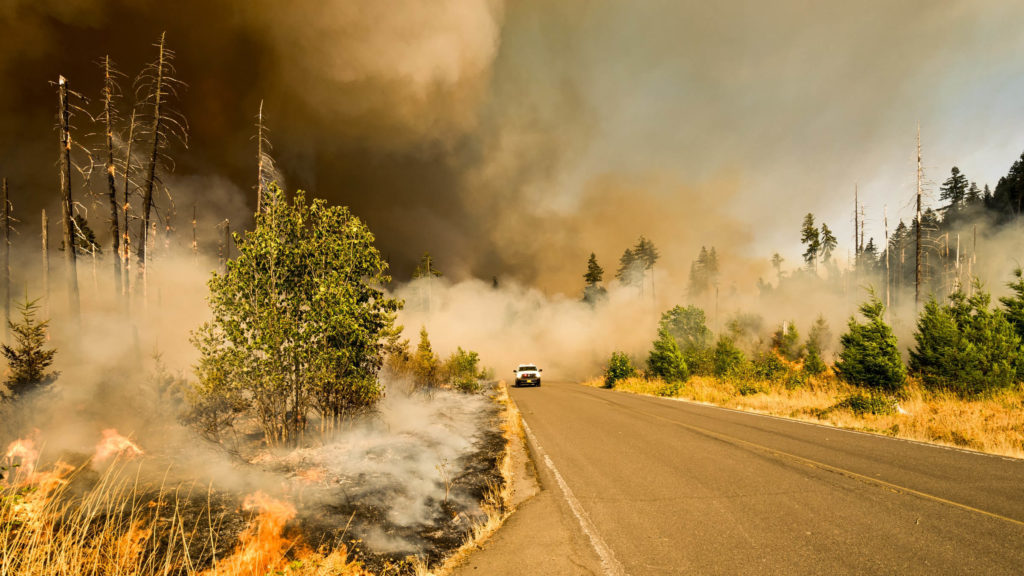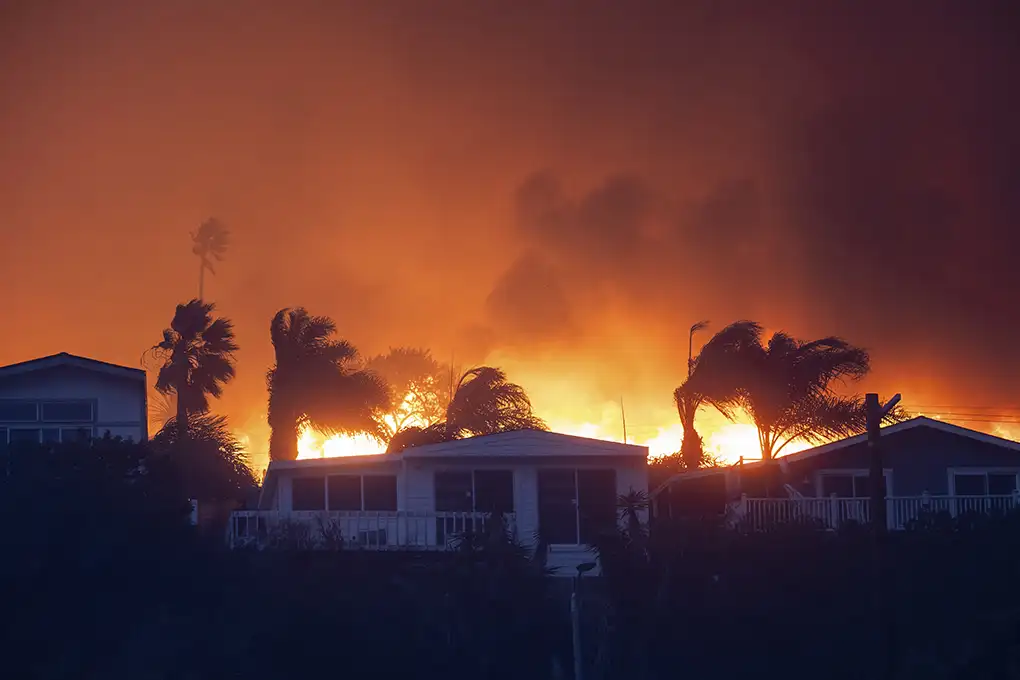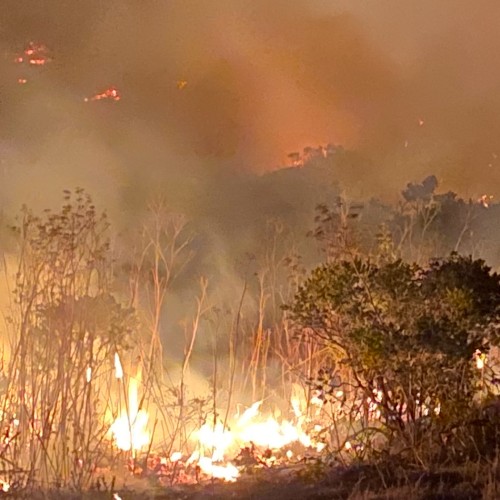LOS ANGELES WILDFIRES
THE ROLE OF CLIMATE CHANGE IN THE CALIFORNIA WILDFIRES
JANUARY 10, 2025
Last Updated: January 17, 2025
As we step into 2025, many of us are left questioning why intense fires are still burning in Los Angeles County during the winter, a time when California typically enjoys a break from the extreme heat and dry conditions that fuel wildfires. It’s a season we expect to offer a moment of respite — a temporary pause from the intensity of fire season.
Yet, the tragic fires we’re witnessing in January are a distressing reminder that the changing climate is shifting the rules we once knew about seasons, weather patterns and wildfire behavior.

As of January 2025, our world is 1.5°C (2.7°F) hotter, and we are experiencing the effects in real-time.
A global rise in temperatures means increasingly unpredictable, volatile and extreme weather patterns. Regions with typically dry and hot climates are experiencing even drier and hotter conditions, while areas prone to hurricanes, typhoons and monsoons are facing more intense and destructive storms. Countries around the world are experiencing more intense seasonal effects, such as heatwaves, winter storms, tornadoes and hurricanes. “Hundred-year” weather events, such as catastrophic floods and fires, are becoming increasingly regular occurrences.
THE CLIMATE CRISIS AND THE LOS ANGELES WILDFIRES
All Hands and Hearts has been responding to the growing frequency and severity of wildfires in California since 2021. The state has long been accustomed to its fire season, which typically peaks in late summer and fall, when dry conditions and high temperatures create the perfect environment for wildfires to spread. However, climate change is blurring the lines of these traditional fire seasons. Wildfires are no longer confined to specific months; they can ignite at any time of year, with winter now proving to be just as susceptible to extreme fire activity as the warmer months. 15 of the 20 most destructive wildfires in California’s history have occurred in the past decade, with the most recent Palisades and Eaton fires in Los Angeles County nearing the top of the list.



HOW DID THE LOS ANGELES WILDFIRES START?
The Los Angeles County wildfires were the result of a “perfect storm” for catastrophic fire conditions. After two years of well-above-average rainfall, Southern California experienced a surge in vegetation growth, trees and shrubs that, once the unusually wet period ends and conditions inevitably dry out, become ideal kindling for wildfires. This winter has been exceptionally dry in Southern California, and 2024 was the state’s hottest year on record. These factors, along with strong Santa Ana winds that blew 90 mph gusts as strong as a major hurricane, fueled the fast-moving wildfires that are impossible to contain once ignited.
ALL HANDS AND HEARTS’ RESPONSE
As we face these growing challenges, we must recognize the importance of both immediate and long-term action. In the short term, it’s crucial to recognize and support local relief efforts to stand alongside affected communities, and work to protect lives, homes and infrastructure. As the wildfires subside, rebuilding efforts will require long-term support, including resources for recovery and resilience planning.
Recognizing the need for sustained support through the long term, All Hands and Hearts has committed to a 12-month response to aid underserved communities through every step of recovery from the LA fires.
The fires in Los Angeles remind us how communities are being hit harder and more frequently by extreme events. Now, more than ever, we need to ensure that organizations dedicated to disaster response and recovery are equipped to meet the growing demand for aid and support.
Please consider donating to All Hands and Hearts’ Los Angeles Wildfire Relief. Donations for LA fires will support local response efforts by directing resources and strong hands to distribution centers in urgent need of help.
Keep up to date with All Hands and Hearts’ response to this evolving event through our Storm Tracker.












